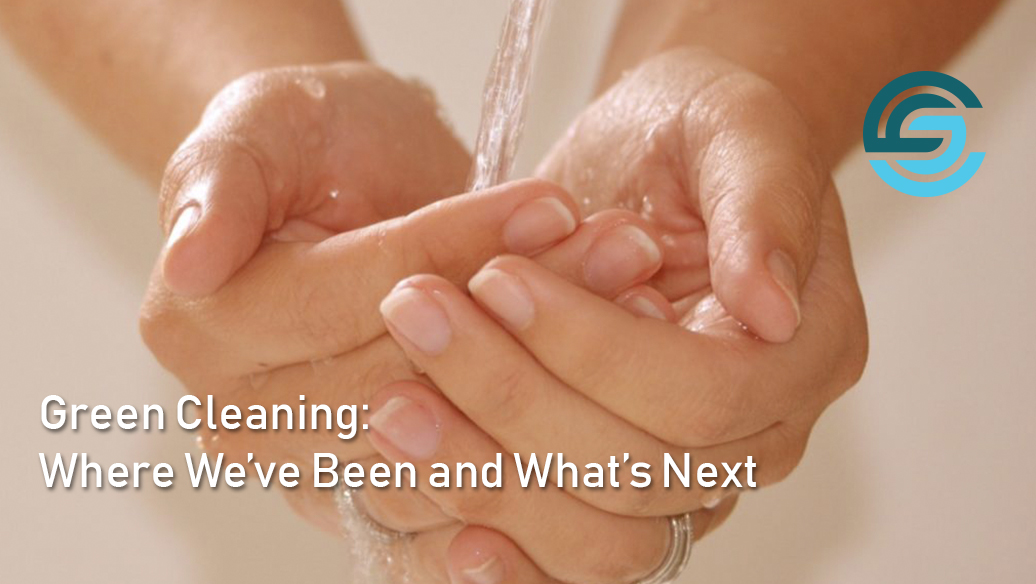[tm_pb_section admin_label=”section”][tm_pb_row admin_label=”Row”][tm_pb_column type=”4_4″][tm_pb_divider admin_label=”Divider” color=”#ffffff” show_divider=”off” height=”50″ height_last_edited=”on|phone” divider_style=”solid”]
[/tm_pb_divider][/tm_pb_column][/tm_pb_row][tm_pb_row admin_label=”Row”][tm_pb_column type=”4_4″][tm_pb_text admin_label=”Text” text_orientation=”justified” use_border_color=”off” border_color=”#ffffff” border_style=”solid”]
For more than two decades, I have been discussing the value and the reasons for green cleaning in the professional cleaning industry. While the first few years of my journey – and it certainly has been a journey – were difficult, with few people attending my seminars or presentations, I am happy to report that today “green cleaning” has become mainstream in the professional cleaning industry.
This means that facility managers and cleaning contractors only select traditional, non-green cleaning products when an environmentally preferable one is not available or is cost prohibitive. And both of those situations are diminishing over time.
One of the most important milestones in the green cleaning movement took place in 2002. That’s when the US Green Building Council (USGBC) released its first LEED Rating System for Existing Buildings. As the USGBC explained it:
LEED for Existing Buildings is a set of performance standards for the sustainable upgrades and operation of existing buildings. It includes building operations and upgrades of buildings, building systems, and building processes in existing buildings.
One of LEED’s most important contributions was helping certification organizations – Green Seal, EcoLogo, the Carpet & Rug Institute, ISSA (the worldwide cleaning association), and others – develop standards, criteria, and guidelines. These helped manufacturers as well as service providers in the professional cleaning industry better determine what was required to manufacture a green-certified product.
Further, it helped purchasers make better choices. Guessing if a cleaning solution, for instance, was truly sustainable was no longer an issue thanks to LEED and these certification organizations. If the product had been certified the purchaser knew it met the sustainable standards of the day.
But what happened next was quite interesting. The “business case for green cleaning” took over. Purchasers began asking for green-certified cleaning products, and soon some manufacturers, distributors, and cleaning contractors heard the call and realized a business opportunity was emerging.
If they offered green-certified products or services, it would separate them from their competitors, giving them a business advantage. While the competition was not too far behind, it appears these early organizations were the first to enjoy the many business rewards of green cleaning.
What’s Next?
We have already mentioned that green cleaning has gone mainstream. So what is next for the professional cleaning industry, and for that matter, the millions of customers it serves?
The industry is getting more and more focused on sustainability. Not only are cleaning-related organizations selecting products and adopting cleaning procedures that ensure natural resources are used wisely and efficiently, but they are also examining their own business operations, looking for ways they can treat their workers fairly; provide benefits and living wages; and also help give back to their communities.
Interestingly, just as a business case for sustainable cleaning evolved about 15 years ago, a business case for sustainability is now making its way through the professional cleaning industry. And once again, it is being led by customer demand.
Today, large organizations throughout the United States and around the world are determining which vendors to do business with based on their sustainability practices. According to the Governance and Accountability Institute:
“Sustainability reporting rose dramatically from 2011, when roughly 20 percent of [Standard & Poor’s 500] companies published reports, to 72 percent just [two] years later in 2013. From 2013 to 2017, the frequency of reporting has increased each year, now up to 85 percent of companies reporting in 2017.” *
The Standard & Poor’s 500 is an index of the 500 largest publicly traded companies in the US and is considered one of the bellwethers of how this country’s economy is going and where it is headed. When these megacompanies begin asking about their vendors’ sustainability practices, it has a powerful impact on purchasing but also a trickle-down effect. Each vendor in succession is being asked about their sustainability initiatives, changing entire industries, including the professional cleaning industry, and encouraging them to develop their own sustainability programs.
Further, we should point out one more thing that will likely push sustainability efforts in the professional cleaning industry as well as most other industries. As this is being written, Hurricane Florence is causing considerable havoc in the Carolinas. While everyone will certainly be negatively impacted, what we are finding is that those organizations whose facilities have survived the storm and are more sustainability focused – for instance, using hybrid cars or solar power to operate their facilities – are the ones most likely to be up and running as the hurricane moves on.
This means that the professional cleaning industry, like so many other industries, is now realizing that sustainability helps minimize risk, making sustainability simply smart business.
Source: Enviromental Leader
[/tm_pb_text][/tm_pb_column][/tm_pb_row][tm_pb_row admin_label=”row”][tm_pb_column type=”4_4″][tm_pb_divider admin_label=”Divider” color=”#ffffff” show_divider=”off” height=”20″ height_last_edited=”on|phone” divider_style=”solid”]
[/tm_pb_divider][/tm_pb_column][/tm_pb_row][/tm_pb_section]

